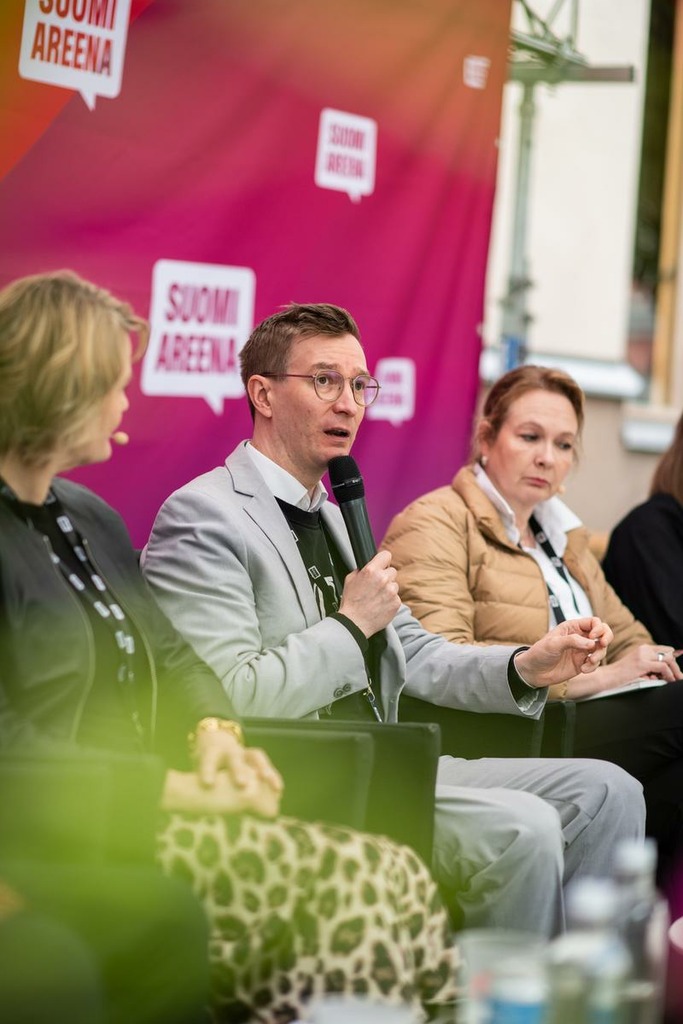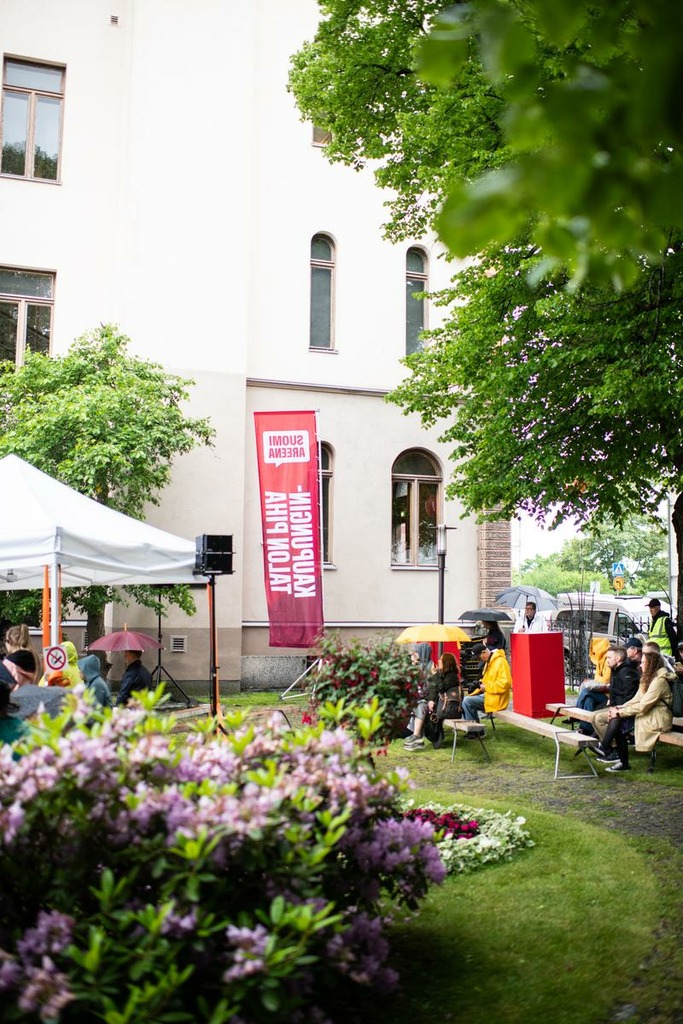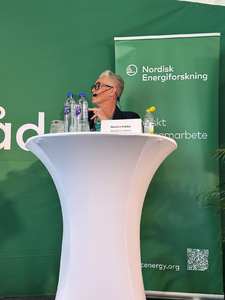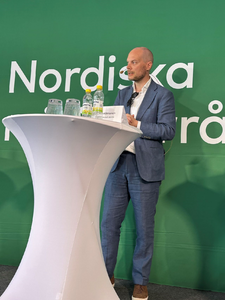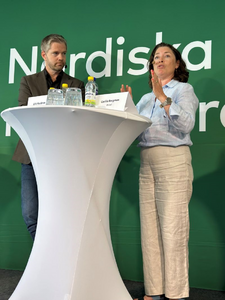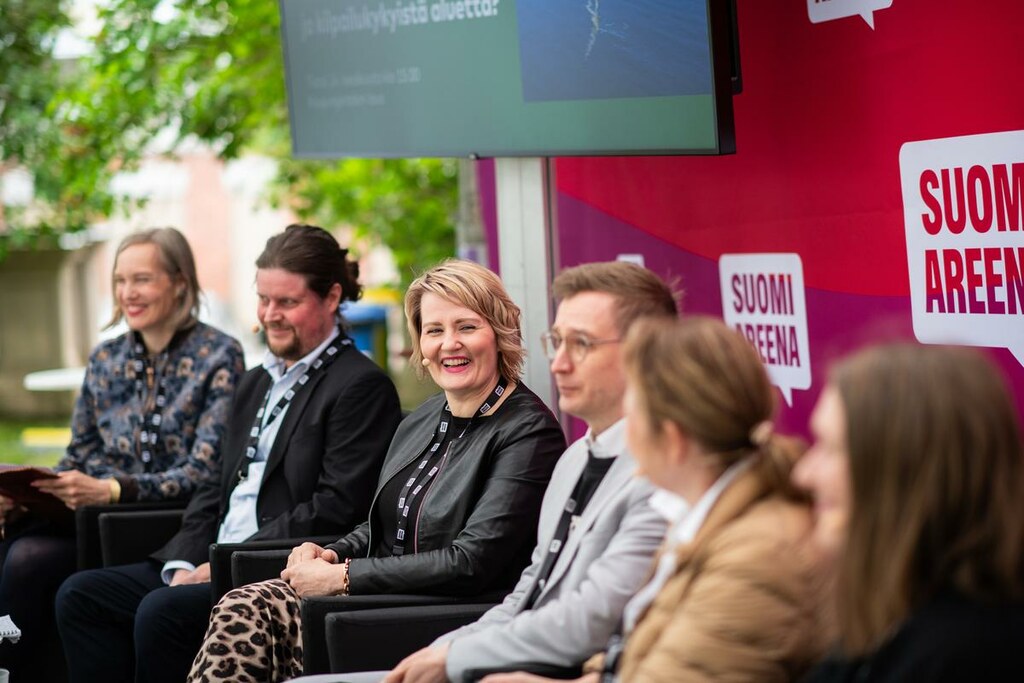
Energy transition in the Nordics – how do we combine security and climate goals?
How can security and climate goals be combined in the Nordic energy transition? This pressing issue was the framework for discussion as Nordic Energy Research took the stage at four…
How can security and climate goals be combined in the Nordic energy transition? This pressing issue was the framework for discussion as Nordic Energy Research took the stage at four Nordic democracy festivals this summer: From Folkemødet in Denmark, Almedalsveckan in Sweden, Arendalsuka in Norway, and – for the first time – SuomiAreena in Finland.
All our sessions sprang from the results of our latest report, Tracking Nordic Clean Energy Progress 2025, which maps the region’s progress in phasing out fossil fuels. Looking back at the discussions, it is clear that Nordic energy cooperation not only supports the region’s path towards carbon-neutrality but also increases the Nordics’ resilience and competitiveness in a changing geopolitical landscape.
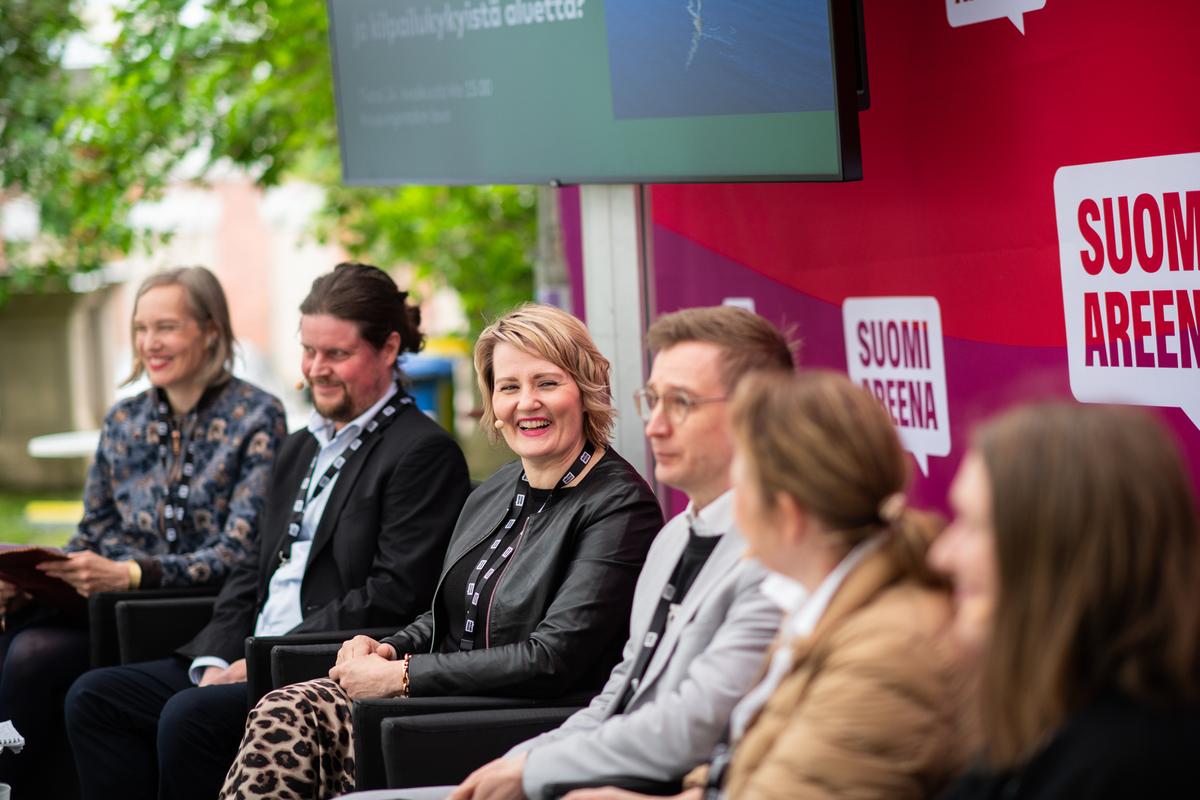
Our expert panel at SuomiAreena. From left: Riikka Suominen, moderator, Antti Silvast, Associate Professor, LUT University, Maiju Westergren, Senior Vice President, Helen Oy, Oras Tynkkynen, Member of Finnish Parliament (The Greens), Helena Sarén, Head of Zero Carbon Future Mission, Business Finland, and Andrea Stengel, Senior Adviser, Nordic Energy Research.
Folkemødet
Cooperation is key for cutting CO₂ emissions
Our Senior Adviser Andrea Stengel opened our seminar at Folkemødet by presenting key findings on clean energy progress made by Denmark. She highlighted that Denmark is cutting CO₂ emissions at a promising rate, largely due to the country’s extensive wind power system. The country’s cooperation with Norway and Sweden, who provide flexibility and backup, has been important for this development.
The importance of Nordic cooperation was also emphasised by Stine Leth Rasmussen, Deputy Director General at the Danish Energy Agency, who pointed out that Denmark is moving towards their sustainability goals thanks to a well-connected Nordic region.
However, many sectors show a need for greater efforts, and although critical steps are being taken, the progress is slow. According to Leth Rasmussen, the slow pace is not primarily due to a conflict between climate and security objectives. Rather, the key barrier is affordability:
“We need to tackle the challenges of a green and secure energy system, but in a cost-conscious way. The green transition needs to happen fast enough, but without spiralling prices.”
Watch a recording of the Folkemødet session here.

From left: Karen Marie Sandgren, moderator, Andrea Stengel, Senior Adviser, Nordic Energy Research, Kim Willerslev Jakobsen, CEO, Energinet Systemansvar, Stine Leth Rasmussen, Deputy Director General, Danish Energy Agency, and Rasmus Helveg Petersen, Head of Communications, Vattenfall Denmark.
SuomiAreena
“The sooner we avoid fossil fuels, the sooner we can cope in a turbulent world”
At SuomiAreena, the panel highlighted the opportunities for a clean and competitive energy industry, where Nordic energy collaboration plays an essential role. But how can energy be both green and secure in Finland and the Nordic region as a whole? According to Antti Silvast, Associate Professor, LUT University, security and the energy transition are not incompatible but united in the concept of resilience:
“‘Resilience’ can be understood quite technically, meaning the robustness of power generation, but I would like to expand the concept. It should also address society’s dependence on a reliable electricity supply and the interdependence of many other infrastructures.”
Oras Tynkkynen, Member of the Finnish Parliament (The Greens), elaborated on how a resilience-based approach can help generate the political will needed to realise the green energy transition:
“Environmental governance must be repackaged in line with current times, for instance by communicating how climate action can also strengthen our resilience. For example, oil and gas market prices can come to rise very sharply as a result of the unrest around the Strait of Hormuz. Therefore, it makes sense from a resilience point of view to break away from this kind of dependence. The sooner we avoid fossil fuels, the sooner we can cope in a turbulent world.”
Maiju Westergren, Senior Vice President, Helen Oy, agreed that a green as well as secure transition is very much within reach. She emphasised that renewable energy is central in our electricity-dependent society and that the Nordic region has the whole palette of renewables that together strengthen our resilience. If one of the power sources fails, you can deliver electricity in another way.
The successful integration of growing renewable energy sources is also one of the factors contributing to Finland’s strong progress towards the national climate targets – since 1990, fossil fuel and industrial emissions are down 42% in the country. However, a lot of investment in new technology is needed.
Helena Sarén, Head of Zero Carbon Future Mission, Business Finland, highlighted how investing in green technology presents an opportunity for the Nordic region as a competitive actor in the global energy industry:
“If you look at the Nordic countries, it is not just about how today’s industry will become low-carbon, but what new possibilities arise with the emergence of new industry. The Nordic region has the potential to be at the forefront here, thereby attracting further investment.”
Watch the recording of our SuomiAreena session here (starting at 05:05:13).
Almedalen
Nordic cooperation on energy vital for energy security
In Almedalen, discussions focused more on the role of the energy transition in regional and Swedish security. The unique contribution of Nordic cooperation to energy security was highlighted by parliamentarians Monica Haider of the Social Democrats and Martin Kinnunen of the Sweden Democrats. Haider emphasised that more coordinated crisis planning across the Nordic countries would be beneficial, while Kinnunen underlined the high level of integration within the Nordic energy system. He noted that Sweden has the right conditions to strengthen grid stability and capacity – key factors for resilience both nationally and across the wider region. He also pointed out that gas supply remains a vulnerable area, with potentially serious consequences in the event of disruption. Both expressed support for developing a Nordic energy resilience framework to better manage such risks.
The Swedish TSO, Svenska kraftnät, was represented by Erik Nordman, Chief Security Officer and Head of the Department for Security and Preparedness. He explained that the current geopolitical situation requires total defence considerations to be taken into account when developing the grid, which affects the speed of implementation. The lack of sufficient fossil fuel alternatives in crisis situations was highlighted as a challenge by Klas Darlin, Head of the Unit for Emergency Preparedness for Electricity and Heating at the Swedish Energy Agency (Energimyndigheten). He stressed the importance of phasing out fossil fuels at a pace aligned with the readiness of scalable replacements and noted that a well-functioning market is essential for building long-term resilience. Cecilia Bergman, CEO of Ørsted AB, added that security concerns can sometimes conflict with the green transition, referring to last year’s rejection of several offshore wind projects, including Ørsted’s.
Both Nordman and Darlin cited NordBER as a concrete example of the Nordic countries sharing information and coordinating efforts. Since the Nordic energy systems are interconnected, they share responsibility for maintaining stability. Nordman also noted that Sweden and Norway belong to the same synchronous area, making balancing a joint responsibility.
Arendalsuka
Is nature our greatest security as the Nordics move towards climate neutrality?
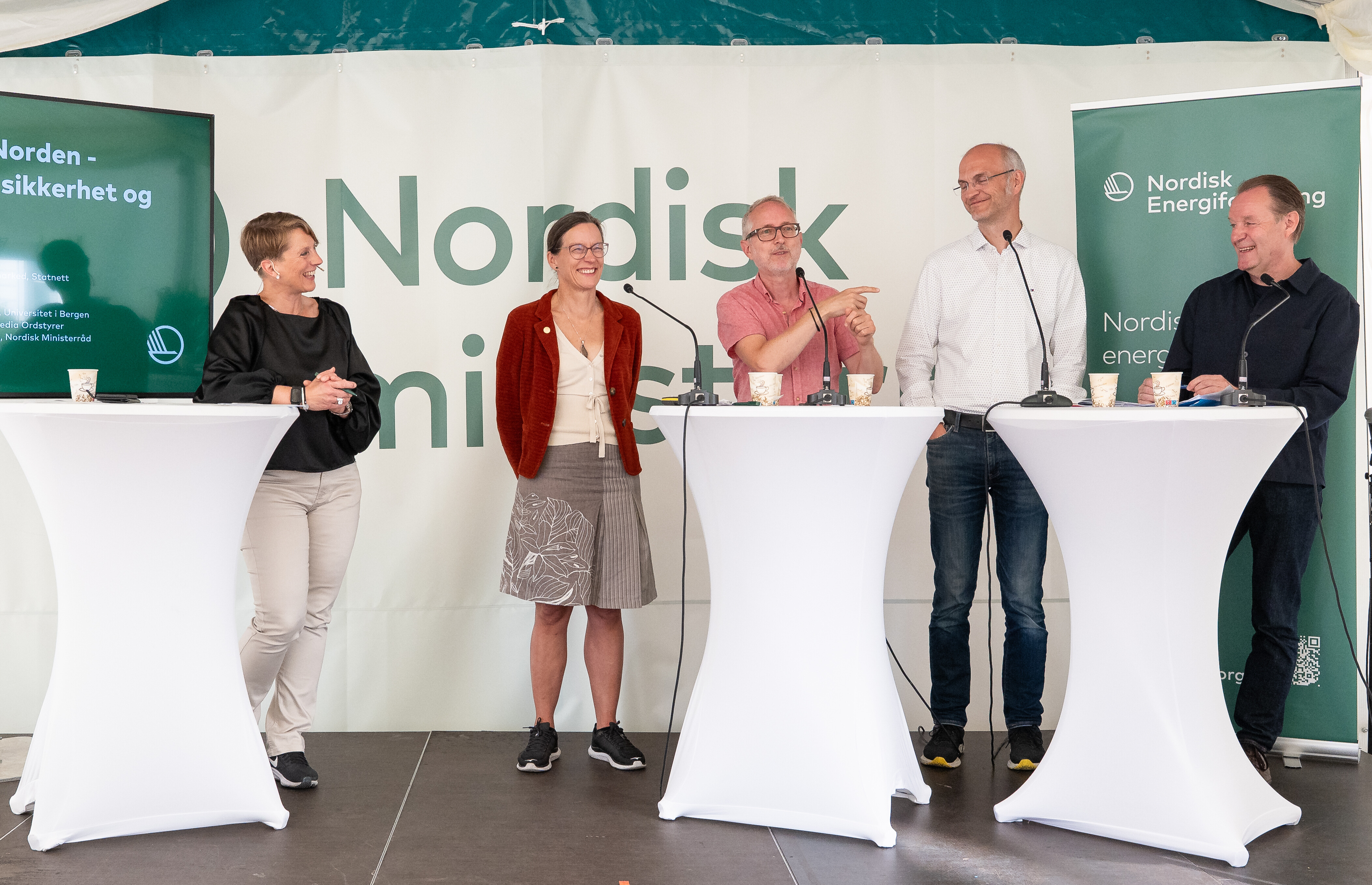
From left: Ruth Astrid Sæter, journalist and moderator, Vigdis Vandvik, Professor and Director of CeSAM at the University of Bergen, Bård Vegar Solhjell, CEO, Fornybar Norge, Henrik Sætness, EVP Corporate Development, Statkraft, and Peer Olav Østli, EVP for System Operations and Market, Statnett.
A strong panel gathered in the Nordic tent at Arendalsuka to discuss how we can address the major challenges of the energy transition. Nordic Energy Research’s adviser, Ole Aune Ødegård, outlined the status of the Nordic countries in their work towards climate neutrality, after which Henrik Sætness, Executive Vice President at Statkraft, spoke about the concrete effects of climate change – for example, how increasing wind and rainfall, as well as fluctuating temperatures, affect both production and pressure on the power grid. At the same time, Norway’s hundreds of smaller production facilities were highlighted as more resilient than regions that rely on fewer, but larger, plants.
Energy system security is not only a geopolitical matter; it is also closely linked to the environment and climate. More climate crisis means more global uncertainty, and nature loss must not be allowed to happen unnoticed, emphasised Vigdis Vanvik, Professor and Director of CeSAM at the University of Bergen. If we continue to erode nature, she warned, we only make the problem worse.
Meeting climate targets requires 70% renewable energy, 25% nature and 5% of everything else, added Bård Vegar Solhjell, Director of Renewable Norway. He also pointed to one of the security issues we face in the future: if so much of society is to become electrified, what happens when the power goes out?
Peer Olav Østli, Executive Vice President for System Operations and Market at Statnett, stressed that Norway’s power system is much better safeguarded against crises and outages than in countries such as Spain. This is largely thanks to strong cooperation on the energy market, transmission grid and cyber security, which together ensure a robust and integrated Nordic power system.
“So, what should we do next?” asked moderator Ruth Astrid Sæther. The panel expressed support for developing a Nordic contingency plan but stressed that the need must be carefully tested. Assessing Norway’s overall use of resources is essential if unnecessary loss of nature is to be avoided. We do not need to build more capacity than is actually required if we can rely on the Nordic region and Europe as Norway’s energy safety net.
Watch the recordings of our sessions at Arendalsuka here (in Norwegian).
A big thank you to all speakers, moderators, and partners for contributing to our sessions in Allinge, Pori, Visby, and Arendal. Thank you also to all audience members for attending, including those who followed the debates via livestream. We look forward to continuing the dialogue and collaboration for a green energy transition in the Nordic region.

